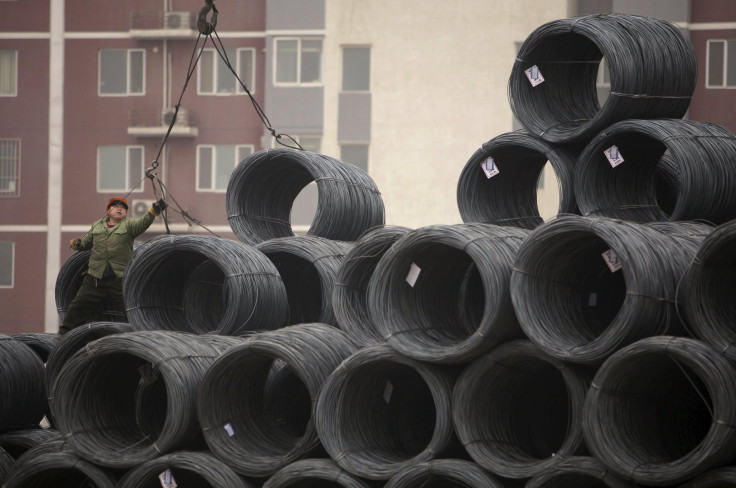China-Backed Trade Pact Playing Catch-Up After US-Led TPP Deal

SEOUL (Reuters) - Left outside the U.S.-backed Trans-Pacific Partnership (TPP) trade pact struck last week, China and India approach this week's talks for a huge Asia-wide equivalent with fresh urgency, lest competitor nations steal a march on export access.
Beijing is a key driver of the Regional Comprehensive Economic Partnership (RCEP), a proposed 16-nation free-trade area that would be the world's biggest such bloc, encompassing 3.4 billion people.
"Member countries will be under pressure to fast-track negotiations for RCEP," said a senior official in India, which is keen to avoid being excluded from major trade accords.
While China's rivalries with India and Japan will complicate progress, it has incentive to get things moving.
China's central bank estimates the world's second-largest economy could forfeit a 2.2 percent boost to gross domestic product if Beijing does not join the TPP, according to a commentary by the bank's chief economist, Ma Jun, published in the official Shanghai Securities News on Friday.
China stands to lose ground to manufacturing competitors such as Vietnam, which as a TPP member will have greater duty-free access to the United States and other member nations, said Tu Xinquan, a professor at the University of International Business and Economics in Beijing.
"It's not that there is a competition between the RCEP and the TPP, but overall, because of the pressure put on by the TPP, there's hope for a faster end to negotiations for more liberalized trade in the region," Tu said.
RCEP was first conceived by the 10 members of the Association of Southeast Asian Nations (ASEAN), but China is increasingly prominent as backer of the proposed pact.
While RCEP has largely been seen as an alternative to U.S.-led trade plans, some say that view is evolving.
China may ultimately look to steer RCEP talks towards a broader pact that would encompass TPP into a Free Trade Area of the Asia-Pacific (FTAAP), said Kim Young-gui, head of regional trade studies at the Korea Institute for International Economic Policy in Seoul - an idea first put forward by the Asia-Pacific Economic Cooperations (APEC) grouping.
Seven countries - Australia, Japan, Malaysia, New Zealand, Singapore, Vietnam and Brunei - are in both TPP and RCEP.
"New Zealand views TPP and RCEP as complementary stepping stones to the vision of a Free Trade Area of the Asia Pacific," said a Ministry of Foreign Affairs and Trade spokesperson.
The TPP deal, reached on Oct. 5 after marathon talks between the United States and 11 Pacific Rim nations, aims to liberalize commerce in 40 percent of the world's economy and would be a legacy-defining victory for President Barack Obama.
Raising Standards?
Obama wants TPP to help boost U.S. influence in East Asia and counter the rise of China, but Beijing officially welcomed the pact, saying it hoped the deal would promote Asia-Pacific trade.
"We hope that regardless of whether it is the TPP or the RCEP, they both can supplement, promote and be beneficial to strengthening the multilateral trade system," said Chinese foreign ministry spokeswoman Hua Chunying.
Prime Minister Shinzo Abe of Japan, a key player in TPP, held out the prospect of bringing China into the deal in future, saying it would increase the pact's strategic significance and improve regional stability.
Washington does not dismiss the possibility, though China would need to undertake reforms to meet the standards of commerce envisioned by the TPP.
"It is not designed to encircle China," Deputy U.S. Secretary of State Antony Blinken said in Seoul last week when asked if Washington sees the TPP deal as a way to check China. "To the contrary, if China is interested in pursuing membership and it is able to meet the standards, we would welcome that."
Those standards include minimum labor rights and principles for currency management that RCEP is unlikely to demand of Beijing.
A Japanese foreign ministry official said TPP would accelerate the pace of RCEP and could have some impact on "raising the level of the outcome of the negotiations”, but the "very diverse group" had different ideas on what might be desirable.
The 16 RCEP countries will present their offers for market opening when they meet in Busan in South Korea on Monday, with an aim to make "best efforts" towards reaching agreement by year-end, a South Korean official close to the negotiations said.
Negotiators are expected to share their lists of offers for tariff reductions on goods and service sectors.
Song Yeong-kwan, a research fellow at the state-run Korea Development Institute, believes agreement nevertheless remains years away.
"Some countries have tensions with China, so it will not be easy, and the process could be a bumpy ride," Song said.
© Copyright Thomson Reuters 2024. All rights reserved.




















